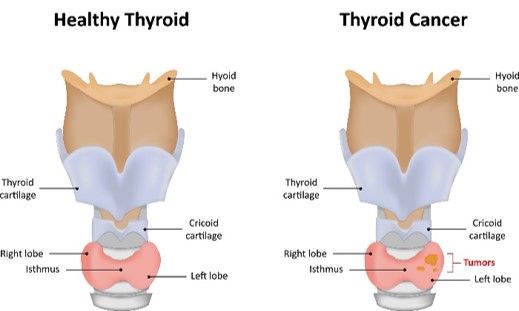Overview
The diagnosis of cancer in a patient is often accompanied by disbelief and feelings of helplessness. The feeling of helplessness may be partly due to a lack of knowledge and awareness of the many treatment options available.
This series of brochures will provide you information on common head and neck cancers, focusing on the following:
For more information about the condition and treatment options, please consult a head and neck cancer specialist.
Cancer Patient Services
The Department of Otorhinolaryngology (Ear, Nose, Throat) in Tan Tock Seng Hospital offers the following services in relation to head and neck cancers:
Diagnosis of the cancer
Appropriate staging of the cancer
Treatment – every cancer patient is discussed with a multi-disciplinary team to identify the most ideal evidence-based treatment
Long-term follow up and monitoring to ensure the cancer does not return
Thyroid Cancer
Thyroid cancer is a cancer that starts in the thyroid gland. The thyroid gland sits in the lower middle portion of the neck and consists of a right and left lobe. Various cancers may arise in the thyroid gland, the most common of which is
papillary thyroid cancer.
Main Causes
However, most patients with thyroid cancer do not have any of these pre-existing risk factors. Instead, the following common symptoms are more accurate in identifying thyroid cancer.
Common Symptoms
Examination and Tests
After the examination, your doctor will arrange for two tests:
Blood test to look at your thyroid function
Ultrasound of the thyroid
If there are any suspicious features, your doctor will arrange a
needle test to determine if the lump is cancerous.

Treatment
In general, most papillary thyroid cancers are curable with surgery, although additional treatment may be required.
Based on the results of the ultrasound and needle test, your doctor will explain the type of thyroid cancer you have, how it will affect you and whether surgery is recommended.
Surgery
During the surgery, your surgeon may remove either the thyroid lobe with the tumour or both thyroid lobes. The extent of surgery depends on several factors, such as your age and the size of the tumour.
Radioactive Iodine Therapy
This once-off treatment is usually recommended for aggressive cancers.
You will be asked to ingest radioactive iodine in liquid form, which targets and kills cancerous thyroid cells in any part of the body. There is little effect on the rest of
the body.
Possible Risks of Surgery
The main risk of surgery is that your voice may change if the laryngeal nerve is damaged during the surgery. This can happen because the laryngeal nerve, which is attached to the voice box, runs just next to the thyroid gland.
The other main risk of surgery may occur only if both thyroid lobes are removed. In such a situation, there is a risk that the calcium levels in the body may become low and you will need to consume calcium oral supplements. This is usually temporary but a small number of patients may require lifelong calcium oral supplements.
The long term survival rates for most thyroid cancers are good and majority of patients have normal life expectancy after recovery.
Cancer Care Management
Our Surgeons are highly trained to ensure the removal of the cancer and affected thyroid gland precision, while ensuring maximum function of the laryngeal nerve and preservation of the parathyroid glands.
Our aim is the same as yours – to fight off the cancer and return you to an ideal quality of life.
